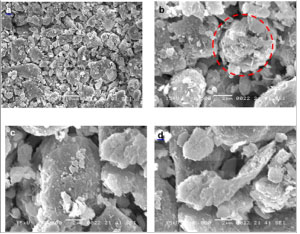Recent developments in climate change have increased the frequency of dust storms in the Middle East. Dust storms significantly influence the performances of solar energy harvesting systems, particularly (photovoltaic) PV systems. The characteristics of the dust and the mud formed from this dust are examined using various analytical tools, including optical, scanning electron, and atomic force microscopies, X-ray diffraction, energy spectroscopy, and Fourier transform infrared spectroscopy. The adhesion, cohesion and frictional forces present during the removal of dry mud from the glass surface are determined using a microtribometer. Alkali and alkaline earth metal compounds in the dust dissolve in water to form a chemically active solution at the glass surface. This solution modifies the texture of the glass surface, thereby increasing the microhardness and decreasing the transmittance of the incident optical radiation. The force required to remove the dry mud from the glass surface is high due to the cohesive forces that result from the dried mud solution at the interface between the mud and the glass. The ability altering the characteristics of the glass surface could address the dust/mud-related limitations of protective surfaces and has implications for efficiency enhancements in solar energy systems.
PDF: Download the PDF

